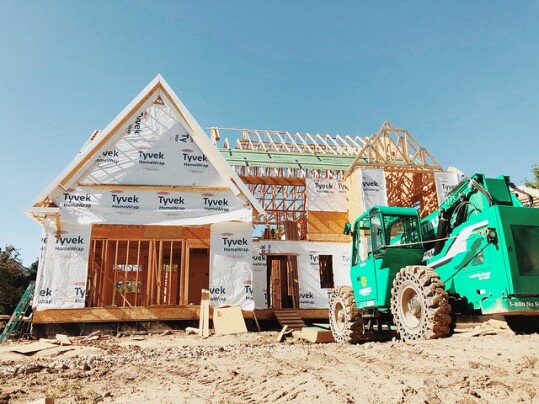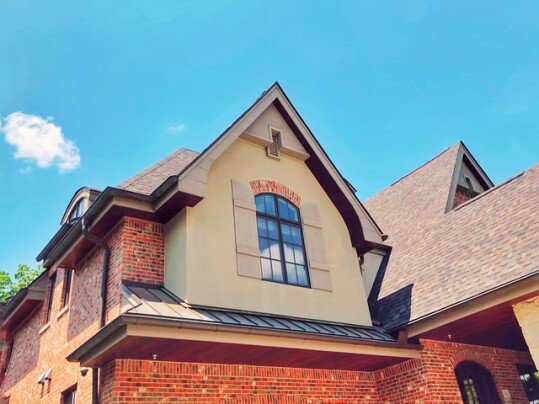Buying a house is enough to think about without having to keep up with a rapidly changing market. Nevertheless, this year’s spring home buyers have had to make adjustments as volatile conditions scrambled budgets and affordability calculations. But while home buyers have faced challenges during the first half of the year, the second half of 2022 could be easier on home shoppers, according to a new outlook from the National Association of Realtors’ consumer website. Their forecast says the market may be refreshed by early fall. What does that mean? Well, for one, it means more homes for buyers to choose from, as inventory improves due to increased home building and slower demand. It also means steadier mortgage rates. That’s good news for potential home shoppers in the months ahead. Danielle Hale, the website’s chief economist, says buyers should remain prepared, though. “Preparation will be key throughout 2022, as it continues to be a seller’s market and asking prices remain high,” Hale said. “For buyers who choose to wait until later in the year, take that time to assess your budget so you’re set up with a strong financial footing whenever you’re ready to move forward.” (source)
Archive for June 2022
Market To Refresh By Fall Forecast Finds
How Much Should You Budget For Utilities?
You can certainly buy a home without thinking about your budget, but it’s not advisable. Without a clear understanding of what you’ll be spending and where, you’re more likely to get yourself into financial trouble. After all, what you can afford is often different than what you can afford comfortably. That’s why it’s smart for home buyers to think about their monthly expenses before heading out to look at listings. That means considering, not only your prospective monthly mortgage payment, but also how much you’ll be spending on everything from property tax to groceries. One easily overlooked cost of homeownership is utility bills. Things like electricity, water, gas, heat, and air conditioning aren’t free and, with costs rising, they can add up. So what should you expect? According to one recent analysis, homeowners spend about $400 a month on utilities on average. That includes around $115 for electricity, $110 for cable and streaming services, $65 for natural gas, and $70 for water. Of course, where you live and how much you use can affect how much you’ll pay. But coming up with a rough estimate of what your utility bills will be each month is an important step, as it will help give you a more accurate idea of how much house you can comfortably afford. (source)
Home Builders Cautious About Market
Home builders are a good gauge of where the housing market is headed. After all, their business depends on being able to tell when and where home buyers are looking to buy. So their perspective on the market for new homes is considered a good indicator of housing health. The National Association of Home Builders measures how confident builders are feeling with their monthly Housing Market Index. The index is based on a survey which scores builders’ responses on a scale where any number above 50 indicates more of them say conditions are good than poor. In June, the index scored a 67, down two points from May. Jerry Konter, NAHB’s chairman, says builders are feeling more cautious these days. “Six consecutive monthly declines for the HMI is a clear sign of a slowing housing market in a high inflation, slow growth economic environment,” Konter said. “The entry-level market has been particularly affected by declines for housing affordability and builders are adopting a more cautious stance as demand softens with higher mortgage rates.” Still, the index components measuring current sales conditions and future expectations remain positive, with the gauge of sales conditions scoring a 77 in June. (source)
Loan Demand Rebounds As Rate Rise
According to the Mortgage Bankers Association’s Weekly Applications Survey, average mortgage rates increased last week from one week earlier. Rates were up across all loan categories, including 30-year fixed rate loans with both conforming and jumbo balances, loans backed by the Federal Housing Administration, and 15-year fixed-rate loans. The increases didn’t slow mortgage application demand, though. In fact, demand for loans was up 6.6 percent from the week before, with applications for loans to buy homes up 8 percent. Joel Kan, MBA’s associate vice president of economic and industry forecasting, says rates increased due to economic uncertainty. “Mortgage rates followed Treasury yields up in response to higher-than-expected inflation and anticipation that the Federal Reserve will need to raise rates at a faster pace,” Kan said. “Despite the increase in rates, application activity rebounded following the Memorial Day holiday week but remained 0.29 percent below pre-holiday levels.” The MBA’s weekly survey has been conducted since 1990 and covers 75 percent of all retail residential mortgage applications. (source)
Mortgage Credit Availability Tightens In May
The standards lenders use to determine whether or not a borrower is approved for a mortgage aren’t fixed. There are times when it’s easier to qualify and times when it’s more difficult. Because of this, the Mortgage Bankers Association tracks whether lending standards are loosening or tightening. Their monthly Mortgage Credit Availability Index measures how easy it is for borrowers to get a mortgage based on several factors, including credit scores, loan types, and loan-to-value ratios. In May, the index fell slightly, indicating that lending standards have tightened from the month before. Joel Kan, MBA’s associate vice president of economic and industry forecasting, says most of the tightening occurred for government and jumbo loans. “Last month’s tightening was most notable in the government and jumbo segments of the mortgage market,” Kan said. “The decrease in government credit was driven mainly by a reduction in streamline refinance programs, as mortgage rates increased sharply through May, slowing refinance activity.” The index component measuring conventional loans fell less than 0.5 percent. (source)
Homes Still Selling For Over Asking Price
The housing market is expected to cool off this year. The number of homes for sale is forecast to increase while buyer demand slows from last year’s frenzied pace. Together, those two factors should help provide some relief to home buyers after years of historically low inventory and surging price spikes. But while a better-balanced market may be on the way, the change won’t happen overnight. It certainly hasn’t thus far. In fact, according to one recent measure of home prices which tracked data through the end of April, nearly 70 percent of homes sold this spring have sold for more than their asking price. That means attractive listings are still receiving multiple offers, as home shoppers face competition from other interested buyers. It also means summer home buyers should probably be prepared for a hot market. Inventory may improve in the months ahead, which will take some of the pressure off – but with prices still increasing by double-digits and the majority of homes for sale receiving multiple offers – hopeful home buyers will be better off if they’re financially ready for a fast-moving, competitive market. (source)
The Housing Market Is Not In A Bubble
It makes sense that people worry we’re in a housing bubble. After all, it wasn’t that long ago that the market crashed and sent home values tumbling. But the recent spike in home prices has little in common with what was happening before the crash in 2008. Experts agree. A recent survey of economists found that the vast majority of them say what’s happening in today’s market is not a bubble. Why? Fundamentals. The home price increases we’ve experienced over the past few years are the result of an imbalance of supply and demand. Put simply, there are a lot of Americans interested in buying a home at the same time that the supply of homes available for sale is much lower than normal. In fact, the number of available listings is about 50 percent lower than it was just two years ago. When that happens, buyers have to compete for the homes that are on the market, which leads to bidding wars and higher prices. In other words, demographics and low inventory are the primary reason prices have been rising, and those aren’t factors that are likely to change anytime soon. (source)







